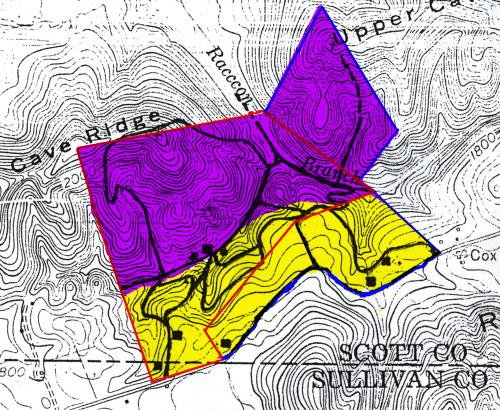
As you can see on the map above, there
are two types of rocks on the property. The south end of the
property is underlain by limestone while the north end of the property
is underlain by "a purplish-red shale formation containing thin layers
of limestone at wide intervals."
The two types of rock on the property result in very different types of soil, land forms, and plant communities in the two areas, each of which will be discussed in detail in a later section. In general, the shale formation on the northern half of the property forms acidic soil while the limestone on the southern half of the property forms soil with a high calcium content.
Source
United States Department of Agriculture. 1951. Soil Survey: Scott County, Virginia.
The two types of rock on the property result in very different types of soil, land forms, and plant communities in the two areas, each of which will be discussed in detail in a later section. In general, the shale formation on the northern half of the property forms acidic soil while the limestone on the southern half of the property forms soil with a high calcium content.
Source
United States Department of Agriculture. 1951. Soil Survey: Scott County, Virginia.
Questions or comments?
Email:


Last updated 9/04.

